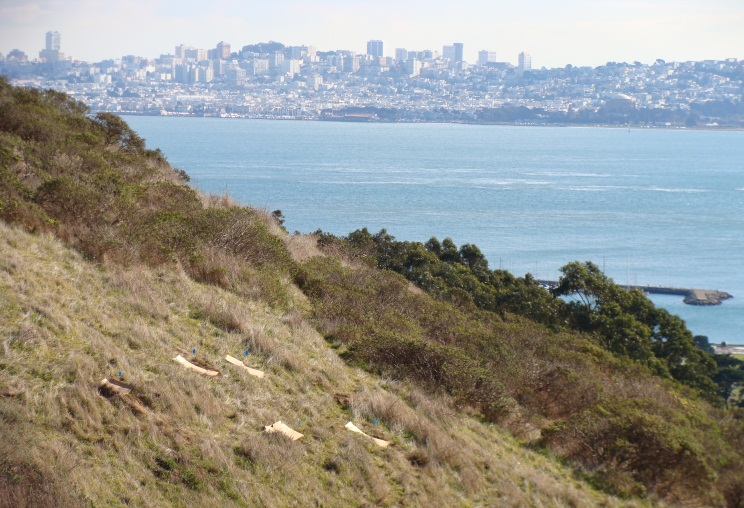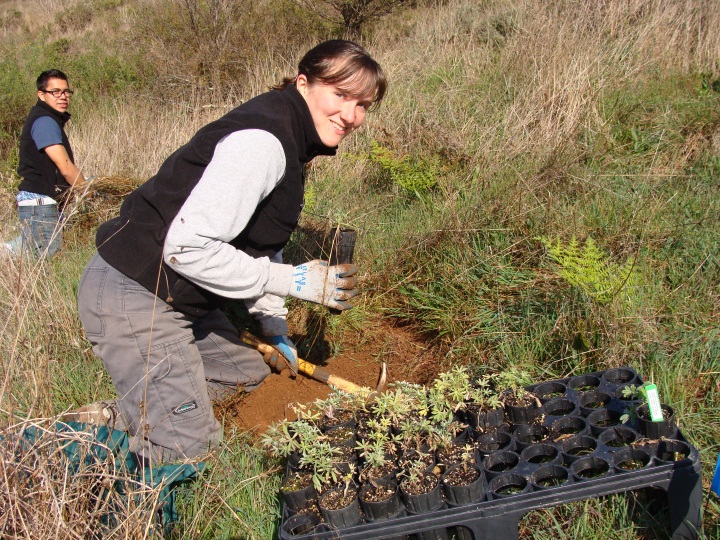Project Mission Blue
Total donations: $23,174 – THANK YOU!
CGCI Chairman: Julie West, julieawest@aol.com
The mission blue butterfly (Icaricia icariodes missionensis) is a unique subspecies of Boiduval s blue butterfly that was first discovered in San Francisco in 1937.Light iridescent blue and roughly the size of a quarter, the mission blue is a native of Bay Area grasslands that contain at least one of its three host plants: the silver lupine, the summer lupine, and the varied lupine.With most of its grassland habitat lost to development, the mission blue became one of the first insects added to the federal endangered species list in 1976.

Today, mission blue butterflies survive only in parts of the Golden Gate National Recreation Area, Twin Peaks, and San Bruno Mountain. Within the Golden Gate National Recreation Area mission blues can be found in the Marin Headlands, and at Milagra and Sweeney Ridges, but their populations are small and isolated, leaving them particularly vulnerable to random events.
Their grassland habitat and lupine host plants are also threatened, primarily by invasions of non-native trees and plants and by a lack of natural disturbances such as grazing and fire that would normally prevent scrubland from taking over the landscape. Additional ongoing threats to the mission blue s survival include poaching, trampling, and climate change.>/P
-
Monitoring: Monitoring mission blues to detect trends in their abundance, distribution, and phenology (e.g. the timing of their flight season) helps to understand how these trends are affected by various conditions and identify where and when intervention is appropriate.
-
-
Phase I: Growing and planting the lupines will not only preserve the habitat but also meet the secondary goals of fostering interest in gardening and plant nurseries and promoting environmental awareness and community engagement.
-
Phase II: Propagating and planting twelve California native nectar plants: Coast Buckwheat (Eriogonum latifolium); California Phacelia (Phacelia californica); Checkerbloom (Sidalcea malviflora); Yarrow (Achillea millefolium); Blue-Eyed Grass (Sysyrinchium bellum); Blue Dicks (Dichelostemma capitatum); Ithuriel s Spear (Triteleia laxa); Coyote Mint (Monardella villosa); Golden Aster (Heteotheca sessiflora bolanderi); California Horkelia (Horkelia californica); Narrow-Leaved Mule Ears (Wyethia angustifolia) and Brownie Thistle (Cirsium quercetorum) that adult mission blue butterflies use as nectar sources and ensures suitable habitat exists in between patches of host larval Lupines.
-
-
Progress reports:
-
Additional resources





CGCI Projects
Donate Online (credit/debit cards; PayPal account)
Donation Form (pay via check)
- Black Point Historic Garden
- Blue Star & Gold Star Families Memorials
- CGCI Endowment Funds
- CGCI Scholarship Fund
- Conejo Valley Botanic Garden
- President's Project 2023-2025
- Sempervirens Fund
The following have special forms or instructions